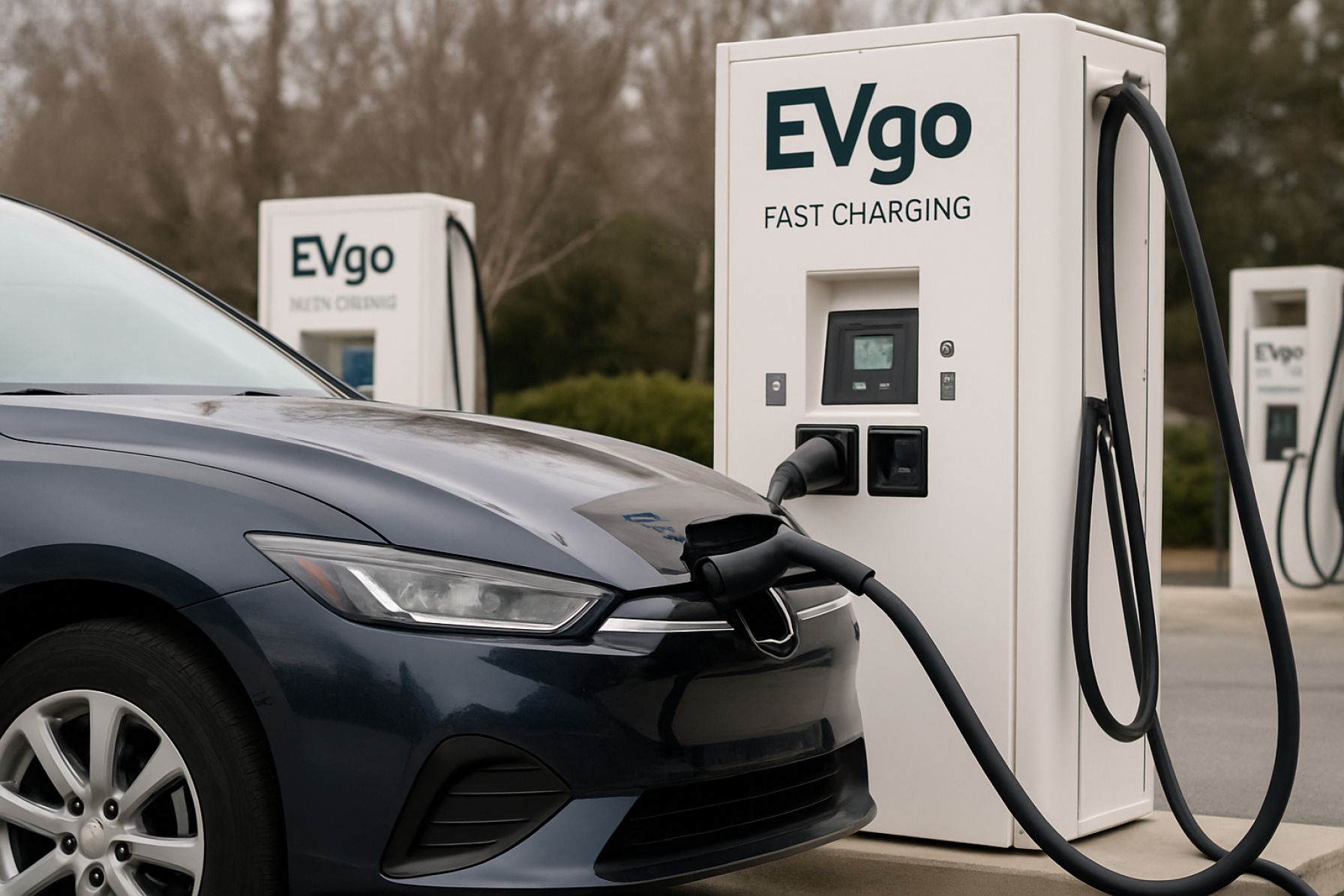- EV charging errors, like a recent $515 million billing glitch, highlight software vulnerabilities in public charging networks.
- Rapid expansion of electric vehicle infrastructure, led by companies such as Blink Charging, brings both innovation and reliability challenges.
- Technical failures, from app bugs to hacked stations, threaten consumer trust and expose gaps in customer support systems.
- Blink Charging faces financial risks, with high bankruptcy probability and recent layoffs indicating industry instability.
- Building a sustainable EV future requires not just advanced batteries and more stations, but robust, user-friendly software and reliable service.
- Trust in the electrified future depends on fixing basic technological and support shortcomings before mass adoption accelerates further.
A storm of zeros swept through one EV driver’s app, turning an ordinary evening plug-in into a surreal modern parable: a six-kilowatt-hour snack for their battery, suddenly priced as though it could buy out a Manhattan skyscraper. The bill was $515,396,082.33. Not a typo. A bug—a menacing glimpse beneath the surface of the electrified revolution now reshaping how we move.
Electric vehicle ownership has scaled faster than many expected, crowding streets with quiet battery-powered cars while public charging networks have flourished, promising convenience and sustainability. Blink Charging, now fielding more than 100,000 stations worldwide, captures the promise—new Maryland factories humming, revenue streams shifting to recurring services, partnerships stitched into city fiber and workplace parking lots. The company’s ambitions run big: expand, connect, lead.
Yet, for one driver, a quick top-up became a Kafkaesque trial—customer support rerouting their call to sales, an AI chatbot that seemed programmed for comedy, and 20-minute phone holds ending only in suspension and silence. A corporation celebrated for innovation, brought to its knees by a basic arithmetic slip that would fluster any neighborhood accountant. Is the digital backbone ready for what’s next?
These are not isolated bugs but canaries in the lithium mine.
The future arrived early, on a glitchy user interface, multiplying kilowatt-hours into the GDP of a small country. Blink’s own market capitalization hovers near $72 million; the bill was enough to buy them seven times over, as online commenters dryly observed. The financial world is watching, too—Macroaxis places the company’s bankruptcy risk at 70%, far above industry averages. A fresh round of layoffs is slashing 20% of jobs, and a new interim CFO reshuffles the C-suite to shore up confidence.
Amid dazzling solar forecasts and glossy EV commercials, these cracks start to appear. A misrouted support ticket blossoms into a meme, feeding a hundred Reddit one-liners about buying military jets instead of charging your Nissan Leaf. Meanwhile, real customers fumble through faulty apps and voice menus, their faith eroded with every dropped call.
Other charging networks, from Tesla to EVgo, have stories of their own: software hiccups, hardware glitches, even hackable stations. But a half-billion-dollar fiasco is a rare beast. As the shift to electric speeds up—fueled by government incentives, city air pollution mandates, and the relentless march of technology—the margin for error narrows.
This is more than a fluke; it’s an urgent reminder that the green future hinges not just on batteries or steel but on trust. Software and service—the invisible wiring of this new world—must grow up as quickly as our appetite for kilowatts. Will automated systems be ready the next time anomaly strikes? Or will we be paging sales, refreshing apps, and nervously checking our credit limit at the charging post?
The moral: when technology leaps ahead, reliability must run beside it. The electric revolution will not stall, but its credibility may falter if the support lines remain tangled and the algorithms run amok. Truly seamless mobility requires companies to remember the human, not only the machine. Next time you plug in, hope there’s not a Stanford math error lurking in the wires.
And, maybe, check your bank account—just in case.
You Won’t Believe How a Simple EV Charging Glitch Cost One Driver Over $500 Million – What Every Electric Car Owner Must Know
Electric Vehicle Charging Apps: When Software Glitches Can Cost Millions
The recent jaw-dropping story of an electric vehicle (EV) driver who was billed over $515 million for a simple charging session has grabbed headlines and triggered important questions about the digital backbone supporting the EV revolution. While the original article recounts the Kafkaesque saga, there’s much more beneath the surface—from the rapidly evolving EV charging landscape to the industry’s growing pains and the pressing need for trust, security, and accountability. Let’s dig deeper with facts, trends, user insights, and real-world tips every EV driver should know.
—
The Real-World Facts: Not Just a Blink Glitch
1. Systemic Growing Pains Across the EV Industry
– EV infrastructure is expanding rapidly: In the U.S., there are now over 160,000 public charging ports and counting, according to the U.S. Department of Energy.
– Bugs aren’t rare: Outages, billing problems, and software errors are reported on platforms from Electrify America to [Tesla](https://tesla.com) and Blink. A J.D. Power study (2023) found nearly 20% of charging attempts failed due to technical or payment issues.
– Charge station hacking is real: Security vulnerabilities, including “juice jacking” (malicious charging stations), have been found in some public infrastructure (Wired, 2023).
2. Customer Support Is Often the Weak Link
– A 2022 EV driver satisfaction survey found “unhelpful phone support” and “confusing apps” as top pain points, especially during urgent travel scenarios.
– Companies like [Blink Charging](https://blinkcharging.com) and EVgo are investing in AI chatbots—sometimes at the cost of human touch, as seen in the surreal support experience recounted by the driver in the viral story.
3. Financial Stability in Flux
– Blink’s 70% bankruptcy risk as cited by Macroaxis is concerning compared to industry averages, suggesting volatility and the need for investors and users to stay informed.
—
How-To: Protect Yourself from EV Charging Surprises
Step 1: Always review your charging session summary in the app before leaving the station.
Step 2: Set up spending alerts or limits on your credit/debit card used for charging services.
Step 3: Keep screenshots of session details and receipts for high-value or unusual transactions.
Step 4: Know the emergency support line for your charging network—and track response times.
Step 5: Update your apps frequently to guard against known vulnerabilities and bugs.
—
Market Trends & Industry Predictions
– EV market is set to soar: Analysts project U.S. EV adoption could reach 40-50% of new car sales by 2030 (BloombergNEF).
– Charging reliability will be key: According to PwC, “uptime and seamless billing will be as important as charging speed” in the next wave of infrastructure investment.
– Smart charging and cybersecurity are top priorities: The U.S. government and [Tesla](https://tesla.com), among others, are funding research to safeguard both payment and energy management systems.
—
Reviews & Comparisons: EV Charging Networks at a Glance
Tesla Supercharger
– Pros: High uptime, fast charging, integrated with Tesla app.
– Cons: Limited support for non-Tesla vehicles until recently.
Blink Charging
– Pros: Fast-growing network, workplace and urban focus, app-based payments.
– Cons: Customer support and software glitches, financial uncertainty.
EVgo
– Pros: High power fast chargers, open to most EVs, some stations solar-powered.
– Cons: App navigation can be tricky, occasional reliability issues.
—
Controversies & Limitations
– Algorithmic errors: From $500 million bills to “stuck” payment holds, digital errors can have massive real-world impacts.
– Security gaps: Poorly secured chargers are vulnerable to data theft and even manipulation of power delivery.
– Accessibility issues: Not all stations are ADA-compliant or located in underserved communities.
—
Specs & Pricing Insights
– Charging session costs: Typically range from $0.20 to $0.60 per kWh on public networks, but can spike due to “idle fees” or software miscalculations.
– Subscription options: Some services (EVgo, Blink) offer memberships for lower per-kWh rates.
—
Key User Questions – Answered
Q: Could I actually be forced to pay a multi-million-dollar EV charging bill?
A: Highly unlikely. Payment processors and network operators have failsafes that flag anomalous transactions, but errors are possible—always monitor your statements.
Q: Can software bugs drain my bank account?
A: Most networks set transaction caps and banks have fraud protections, but large holds can temporarily impact your available funds.
Q: Is my payment data safe at a public charger?
A: Not always. Use RFID cards or digital wallets over swipe/chip readers where possible, and monitor for skimming devices, just as you would at an ATM.
—
Actionable Recommendations & Quick Tips
1. Double-check your charging receipts and report discrepancies immediately.
2. Use network apps with biometric login or two-factor authentication.
3. Review your charging station provider’s financial health and support responsiveness—especially before planning road trips.
4. Follow trusted EV forums for real-time updates on app issues, outages, or rate changes.
5. Encourage providers to publish uptime stats and security certifications for greater transparency.
—
Conclusion: Trust, Transparency, and Tech Maturity
As the EV ecosystem scales up, error-free billing, robust support, and cybersecurity are just as crucial as battery range or charge speed. Companies like [Blink Charging](https://blinkcharging.com) are racing to future-proof the grid, but their recent mishaps underline a simple truth: until the software infrastructure “grows up,” EV drivers must remain vigilant, informed, and proactive. Next time you charge, don’t just plug in—plug in smart.
—
Click here for more on [Tesla](https://tesla.com) and [Blink Charging](https://blinkcharging.com): learn what’s really happening behind the scenes of your next charging session!









